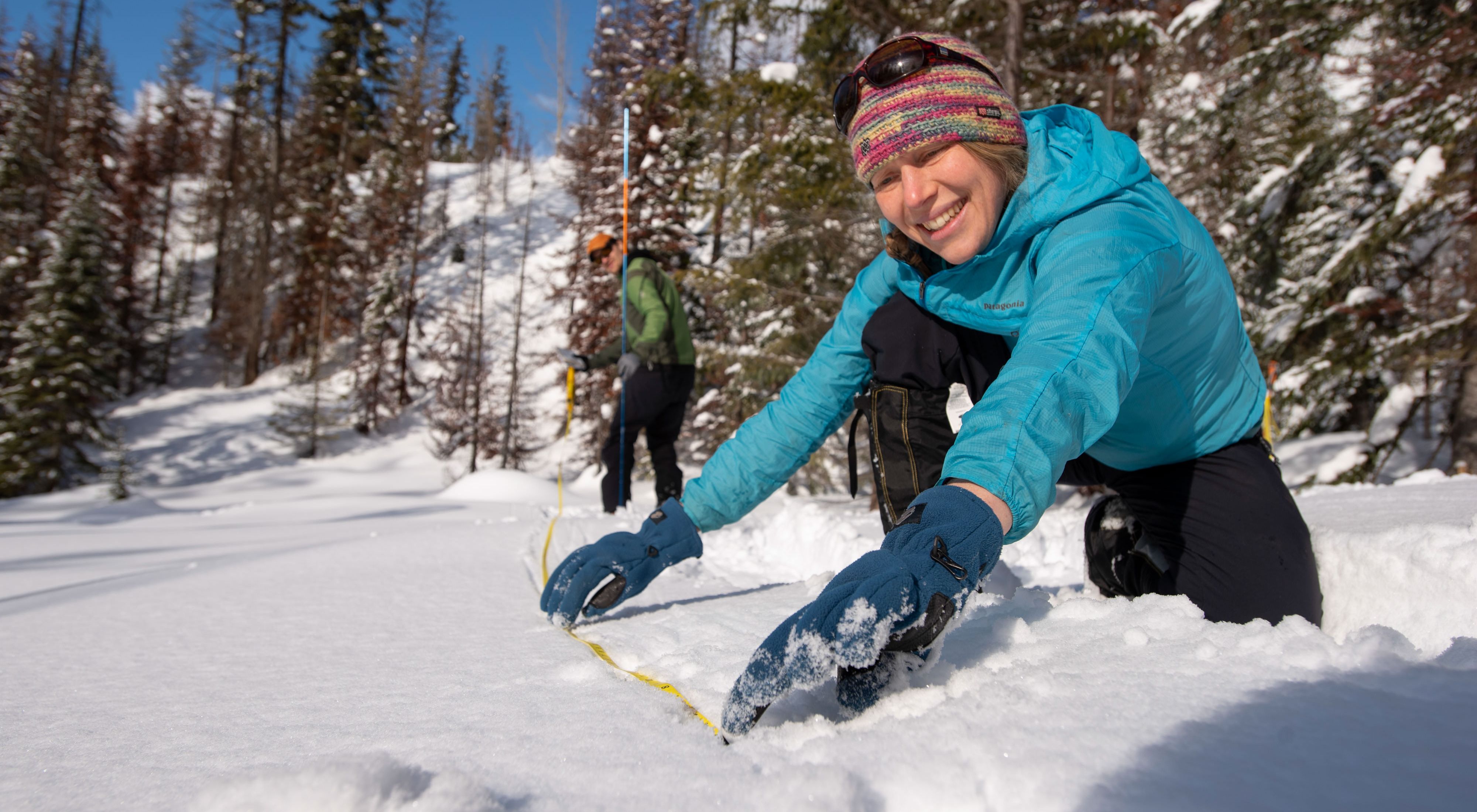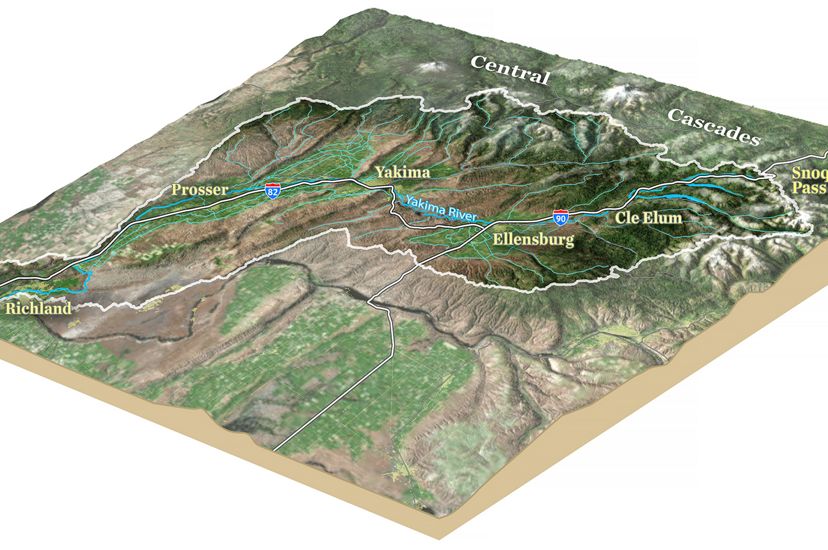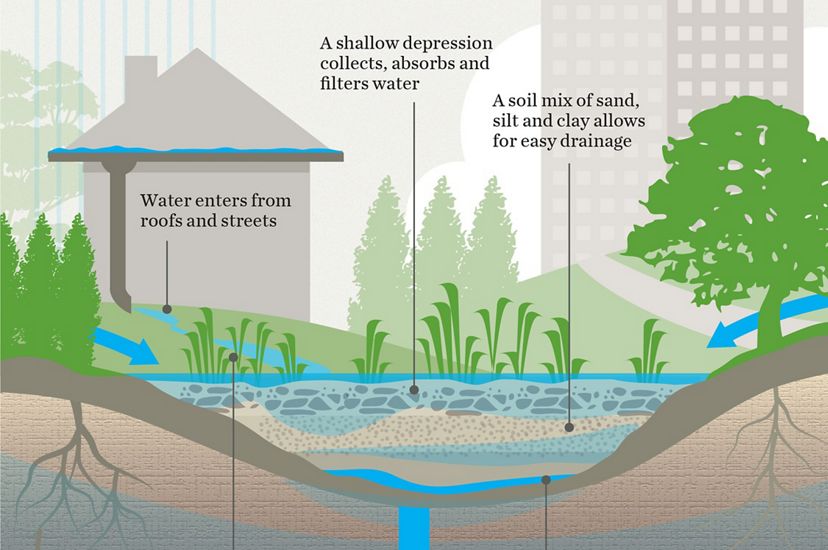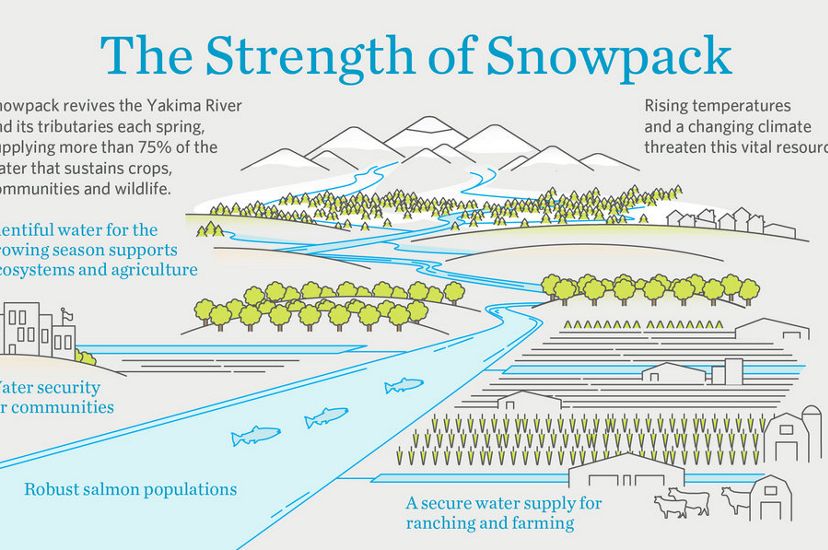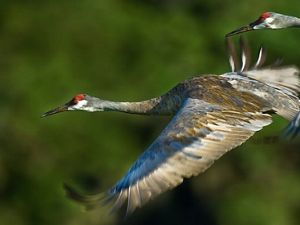It’s winter on the eastern slopes of Washington’s Cascade mountain range, and Nature Conservancy scientist Emily Howe is up to her mittens in snowpack.
This is the sunny side of the Evergreen State. Just east, in Yakima, rainfall averages less than 8½ inches per year. Yet the Yakima Valley is an agricultural powerhouse, producing 39 different foods, including 75 percent of the nation’s hops and 100 million boxes of apples every year.
Climate Resilience Through Science
Where does the water for this lush harvest come from? Snowpack. As the eastern Cascade snow slowly melts each spring, it sustains the Yakima River and the valley’s critical aquifers during the region’s dry summer.
But as climate shifts, the snowpack is thinner, and melts earlier in the year. Emily, with a doctorate in aquatic biology, leads a TNC-led snowpack study to determine what forest management practices could best sustain this snowpack and the life-giving water it provides.
Our 48,000-acre Central Cascades Forest provides an ideal natural laboratory to find out.
Reducing Stormwater Runoff
Linking forest management and water supply is just one way that science helps The Nature Conservancy in Washington improve landscape-scale resilience, here in our beautiful state and beyond. Using a practical, collaborative approach that incorporates innovative science and technology, we aim to change the way we practice conservation.
West of the Cascades, for example, we’ve created a stormwater heatmap that uses traffic data to identify where green infrastructure can have the greatest impact to reduce runoff of pollutants that threaten our rivers, Puget Sound, and the region’s iconic salmon population.
Currently, stormwater runoff from roads, cities and farms washes millions of tons of pollutants such as phosphorous and heavy metals into our waterways. By combining stormwater monitoring data, land-use maps and artificial intelligence technology that maps impervious surfaces, the stormwater heatmap reveals the location and expected amount of specific pollutants throughout the Puget Sound region.
The map will help identify the most effective places to curb pollution using green infrastructure. Green infrastructure refers to nature-mimicking stormwater control solutions, like raingardens or bioswales, that divert and filter polluted runoff before it enters Puget Sound and the freshwater habitats that feed it.

Balancing Water, Trees and Fire
Back in the eastern Cascades, Emily and colleagues focus on this question: What helps eastern Cascade snowpack last longer — open spaces where more snow accumulates but may melt sooner, or dense tree canopy, where less snow accumulates, but shade may contribute to a linger-longer spring melt-out?
“It’s a puzzle,” says Emily.
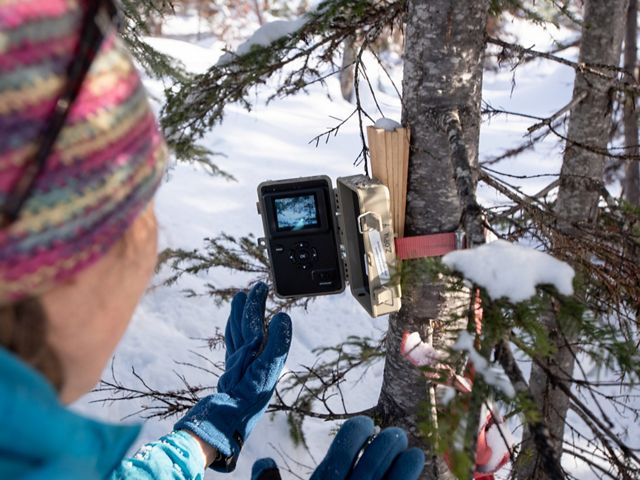
Exploring the answer, she’s discovered, means wrangling unruly lengths of PVC pipe, skiing miles into remote sites and poring over many megabytes of data and tens of thousands of photos. At six test plots, she and colleagues have set up automated cameras that record a time-lapse of snow levels on PVC stakes. In addition, temperature probes tucked into the soil reveal the date of melt-out. When temps shift from steady cold to wild daily swings, for example, it means snow no longer insulates the ground in that spot.
This two-year TNC study is the first to link tree cover to snowpack duration in the eastern Cascades. It will help TNC manage our Central Cascades Forest to make the most of shrinking snowpack for the benefit of downstream users, such as farmers. How many trees do we leave and how many do we thin? Which ones?
Ideally, what’s good for snowpack will be good for another TNC goal: improving fire resilience. If not, says Emily, we’ll need to find science-based solutions that balance both water and fire. Science, she’s sure, can help find a way.
In Conservation, Science is Power
From snowy Cascade forests to Puget Sound waters, science plays a central role in the TNC’s vision for Washington state and beyond. Our innovative, collaborative and practical approach allows us to investigate critical—and ever evolving—questions at the intersection of conservation, ecology, economics and social science.
For example: What is the interplay between ecosystem restoration, human health, agriculture and communities? How can we invest resources to best maximize climate resilience? In a continuing quest for answers, a partnership between TNC scientists, the University of Washington, and the science and technology sector will generate peer-reviewed papers and explore scalable strategies that transform the relationship between people and nature.
Science is so much more than data. Crafted by innovation, carried out by diligent investigation, built on facts and evidence, science is power. It gives us the power to understand how natural and human systems function together in Washington state—and makes the TNC’s work more effective than ever.
